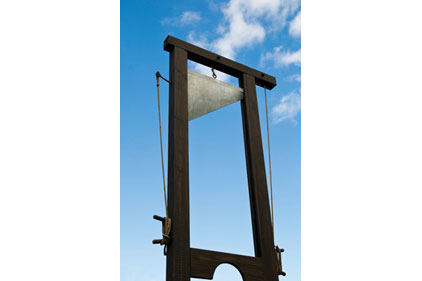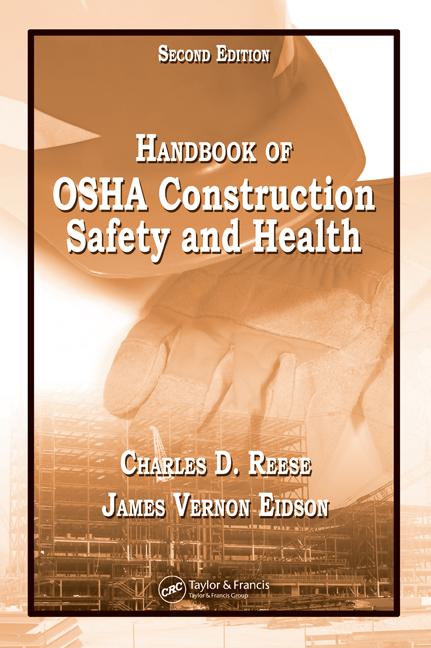Conservatives are irate because so-called “discretionary spending” budget cuts are not spelled out. Tea Partiers in particular assert if you can’t pin down old school pols, they’ll figure a way to weasel out of painful program cuts.
Which bring us to little ole OSHA. Yes, in The Great Debt Ceiling Debate of 2011, with trillions of dollars in budget cuts talked and tossed about as though we’re talking real money, OSHA’s fiscal year 2011 budget of $558 million is like throwing a penny in the ocean.
Still, discretionary spending programs in the realm of job safety and health, such as OSHA, MSHA, EPA, FEMA and NIOSH, will eventually be scrutinized. Nightmare scenarios abound in DC these days. Here’s my own hypothetical exercise in seriously slashing OSHA’s budget:
1 – Close area offices.
After all, the U.S. Postal Service is looking at closing more than 3,000 post offices across the nation. Military bases and facilities, including the famous Walter Reed Army Hospital in DC, are being shuttered. OSHA has more than 60 field offices. I can see Congressional budget-cutters who know nothing of OSHA operations arbitrarily deciding to do away with a third or a half of the area offices.
2 – Shut down OSHA’s standards-setting office.
That would save about $20 million. One OSHA wag told me recently: “Forget about standards. Even in an second Obama term, you’re not going to see standards.” OSHA hasn’t been productive in this department in decades. Let NIOSH put out substance- and hazard-specific risk assessments and guidelines. That’s if there is anything left of NIOSH after it faces the axe.
3 – Reinvent OSHA as strictly an enforcement agency and compliance assistance shop.
Which means the agency answers complaints, targets bad actors, and runs a whale of a web site.
4 – Turn OSHA’s inspectors/compliance officers into independent contractors.
Sure, they are protected by a union. But the Teamsters Union supposedly protects Amoroso Bakery truck drivers in Philadelphia. Amoroso wants all its drivers to buy back their routes and work as contractors — they would be responsible for their own healthcare, vehicles, vehicle maintenance, gas, in essence running their own businesses. Currently the Teamsters are trying to find a compromise, but old school company paternalism is history.
One plan to reduce the size of OSHA is already on the table. Senator Tom Coburn (R-Okla), who was part of the bipartisan “Gang of Six” that tried to forge a compromise on the budget ceiling, has targeted OSHA’s budget as a key priority. In July, Coburn published a deficit reduction plan called “Back in Black,” which called for $72.6 million in cuts to OSHA, or 15 percent of its current budget. How? Eliminate OSHA community workforce training programs. Cut worksite inspections by OSHA inspectors. Focus resources on voluntary safety programs.
Who’s got OSHA’s back?
OSHA is vulnerable to budget hacking because, if you think about, who are OSHA’s friends in DC? Unions, yes, but their clout has diminished for years now. More to the point, unions first and foremost want job security and job creation.
ASSE, AIHA, NSC? Yes. The American Public Health Association and Public Citizen and OMB Watch and groups like the New York Committee for Occupational Safety and Health. Sure. But these groups can’t match the muscle of the U.S. Chamber of Commerce or the National Association of Manufacturers.
You can count on one hand the pols in Congress who “get” OSHA issues. Democratic Rep. George Miller of California is one. Republican Sen. Mike Enzi of Wyoming another. Otherwise, legislators only know of OSHA by reputation — in the form of complaints from employers. OSHA has a PR problem on the Hill. No constituent calls to say what a great job OSHA is doing.
Things seldom turn out as expected in DC’s theatre of politics. So it is with OSHA’s fate. Budget cuts could be smaller than I imagine here. But cuts are coming.
Experts chime in
I asked several OSHA-watchers in DC for their damage assessment of possible budget cuts to OSHA. By and large they are sanguine about the agency’s fate.
“As I look at the FY12 budget — without the debt cutting program — I see them leaving OSHA alone, perhaps a flat-line budget or a small cut,” says Aaron Trippler, director of government affairs for the American Industrial Hygiene Association.
“If the debt-cutting comes down to a choice between Social Security, Medicare, Medicaid, OSHA and NIOSH, I can assure you the Democrats will throw OSHA and NIOSH into the fire. For that matter, the Republicans will do the same thing. No one has ever won or lost an election based on OSHA or NIOSH.”
Says Dan Glucksman, government affairs director for the International Safety Equipment Association: “While some in Congress may be gunning for OSHA, being overtly anti-workplace safety, I believe, would have negative repercussions that outweigh the federal savings. I think there are many other programs that get cut before OSHA
“I tend to think Democrats will hold the line for OSHA as a symbolic labor position,” says Dave Heidorn, JD, manager of government affairs and policy for the American Society of Safety Engineers.
“NIOSH is the one in trouble. CDC has no great interest in protecting NIOSH. No one really does. In the grand scheme of things, you could make the argument that not gutting NIOSH may be more important than holding the line at OSHA. No one else is really pushing forward the envelope like NIOSH. NIOSH under Dr. John Howard is a force. There is a future for OSH that he sees. Few people in the business have that kind of vision. How much could he do with even less money than NIOSH has now?”
Frank White, JD, senior vice president for Mercer’s Washington, DC-based global EHS consultancy, shares Heidorn’s concern: “NIOSH is once again in a more exposed situation that put that agency in some significant fiscal peril.
He continues: “I agree with those who believe OSHA may weather the cost-cutting cyclone better than some other agencies. It is not a big enough target, even within the DOL, where there are bigger “pots” of potential dollars. Also, OSHA does seem to have some stealth defenders in the administration who may be able to mitigate the adverse impact.”





